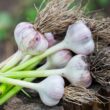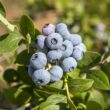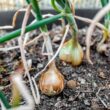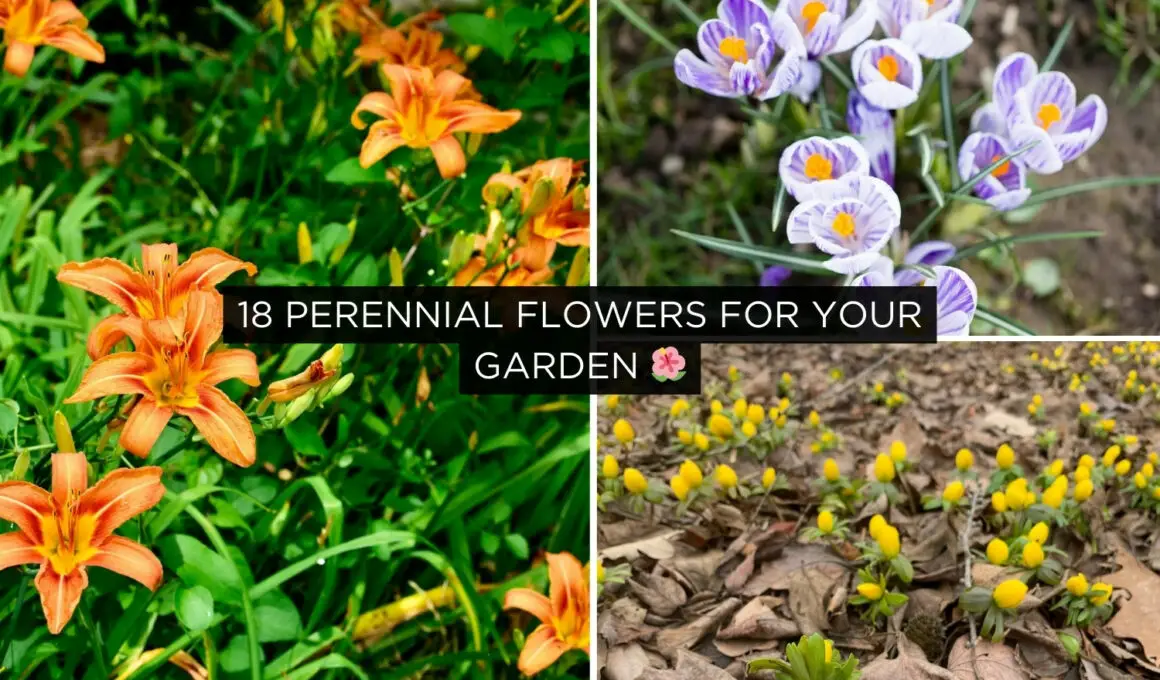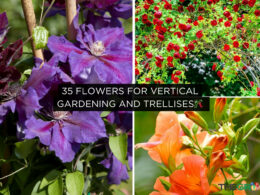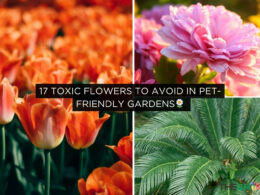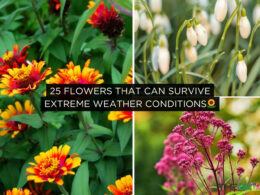In This Article Show
Welcome to our guide on 18 essential perennial flowers that promise to enrich your garden with vibrant colors and lively textures year after year. As an experienced gardener, I’ve come to appreciate the joy and ease that perennials bring to outdoor spaces. These resilient plants, thriving in a variety of climates and conditions, offer a sustainable and ever-evolving backdrop to any garden.
Whether you’re looking to attract pollinators, create a low-maintenance garden, or simply enjoy a succession of blooms from season to season, this carefully curated selection is designed to inspire and inform gardeners of all levels. Let’s explore how these perennial favorites can transform your garden into a flourishing haven.
Early Spring Bloomers
These early bloomers offer a diverse range of colors and textures to awaken the garden from winter’s rest, setting a lively scene for the growing season ahead.
1. Crocus
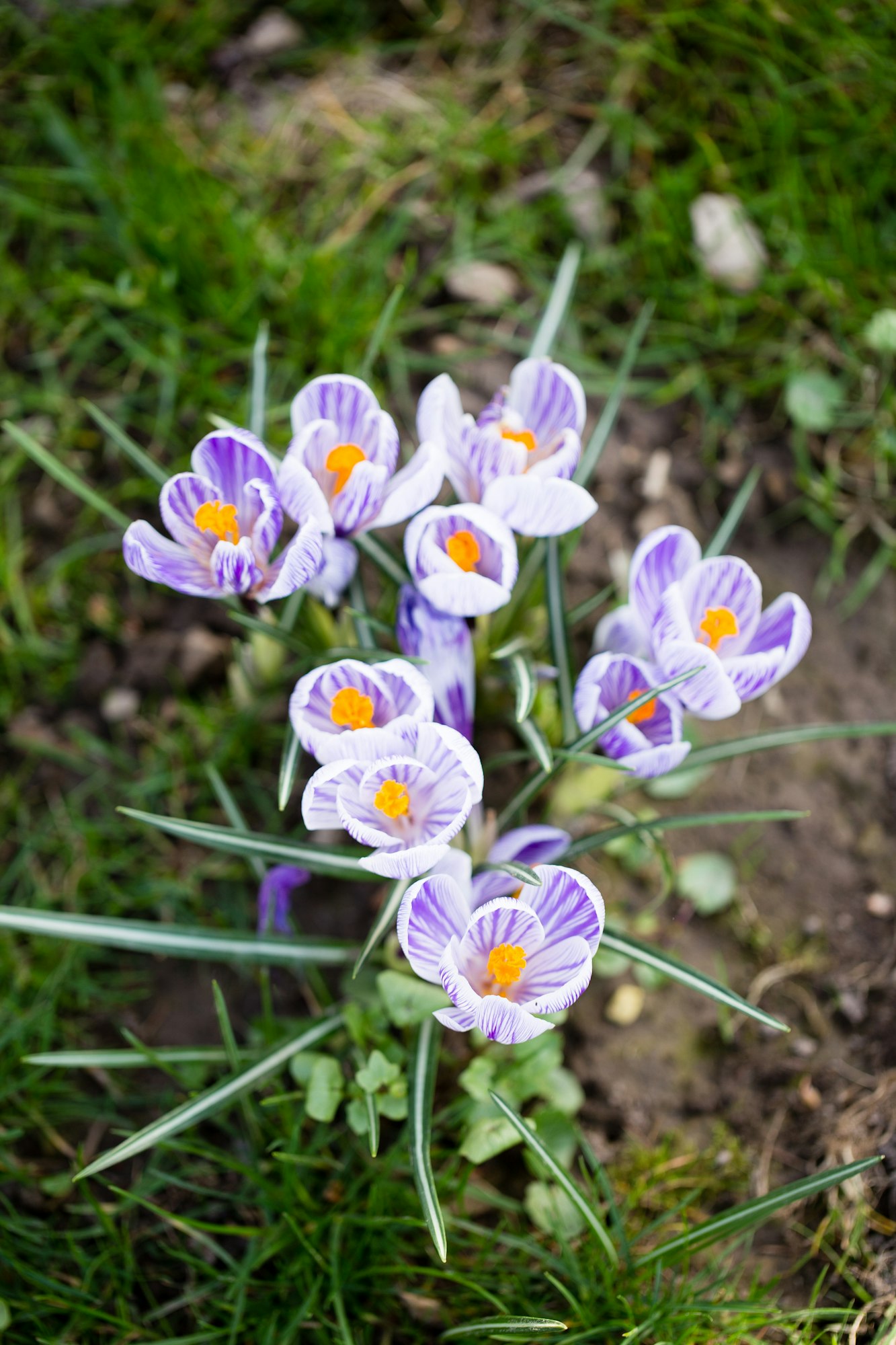
Crocuses are among the first to greet the spring, their cheerful cup-shaped flowers emerging even through the snow. Available in a palette of colors including purple, yellow, and white, they are a symbol of rejuvenation and a precursor to the full bloom of spring.
- Care Tips: Plant crocus bulbs in well-drained soil in fall, about 3 to 4 inches deep, with the pointed end up. They prefer sunny to partially shaded locations. Once planted, they require minimal care and will naturalize, meaning they’ll come back year after year in greater numbers.
- Planting Zones: Hardy in USDA zones 3-8, crocuses are versatile and can thrive in a wide range of climates.
2. Hellebore (Lenten Rose)
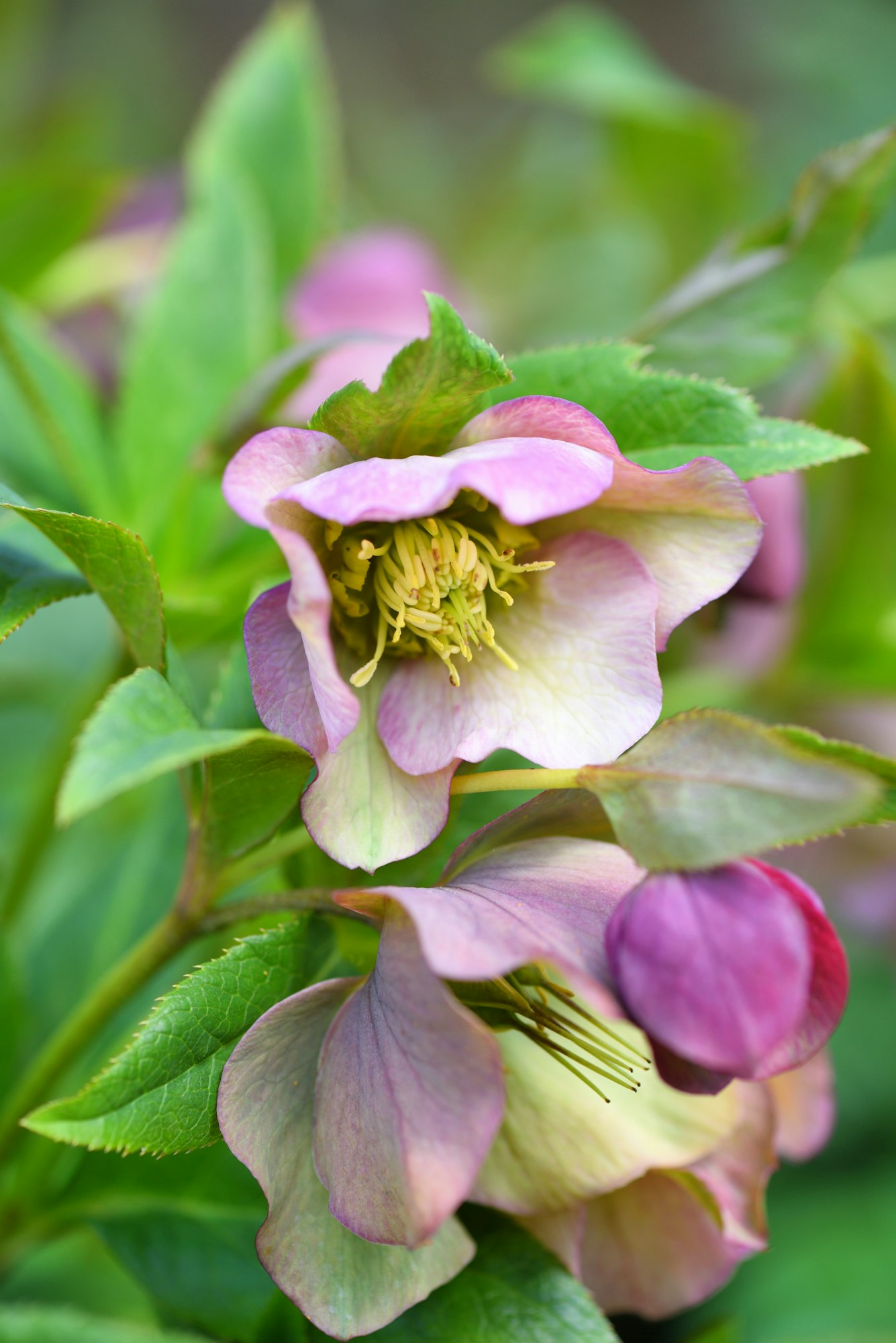
Hellebores are prized for their early blooming flowers and resilience in cold weather. The flowers, which can appear in shades of white, green, pink, purple, and almost black, often emerge in late winter to early spring, sometimes when snow is still on the ground.
- Care Tips: Plant in partial to full shade in rich, well-drained soil. Hellebores are drought-tolerant once established but benefit from regular watering during dry spells. Mulching helps retain moisture and keeps roots cool.
- Planting Zones: Ideal for gardeners in zones 4-9, hellebores offer a robust solution for shaded areas of the garden.
3. Primrose
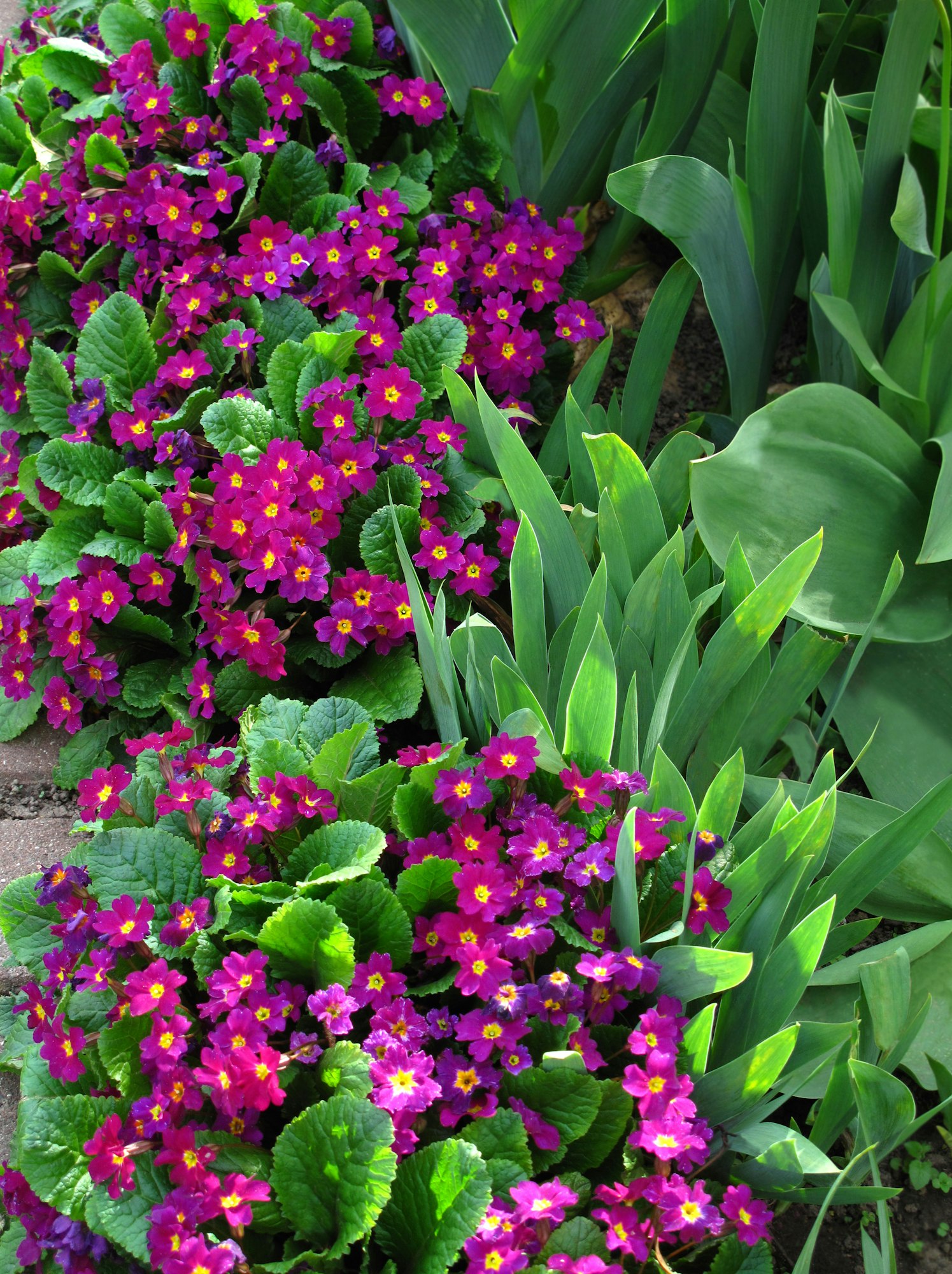
Primroses bring a burst of color early in the spring with their vibrant, often bi-colored flowers. They come in a wide range of colors, including blues, reds, yellows, and pinks, lighting up any garden space with their cheerful blooms.
Get Gardening For Beginners
Our new EBOOK shows newcomers and green thumbs alike a step by step guide to growing the garden of their dreams.
- Care Tips: These flowers prefer partial shade and moist, well-drained soil rich in organic matter. Regular watering is essential, especially during dry periods. Deadheading spent flowers can encourage a longer blooming period.
- Planting Zones: Primroses do well in USDA zones 5-9, making them a versatile choice for many gardeners looking to add early spring color.
Spring to Early Summer Bloomers
These spring to early summer bloomers provide a seamless transition in the garden, offering a spectacular display of colors and forms that captivate and enchant as the seasons progress.
4. Peony
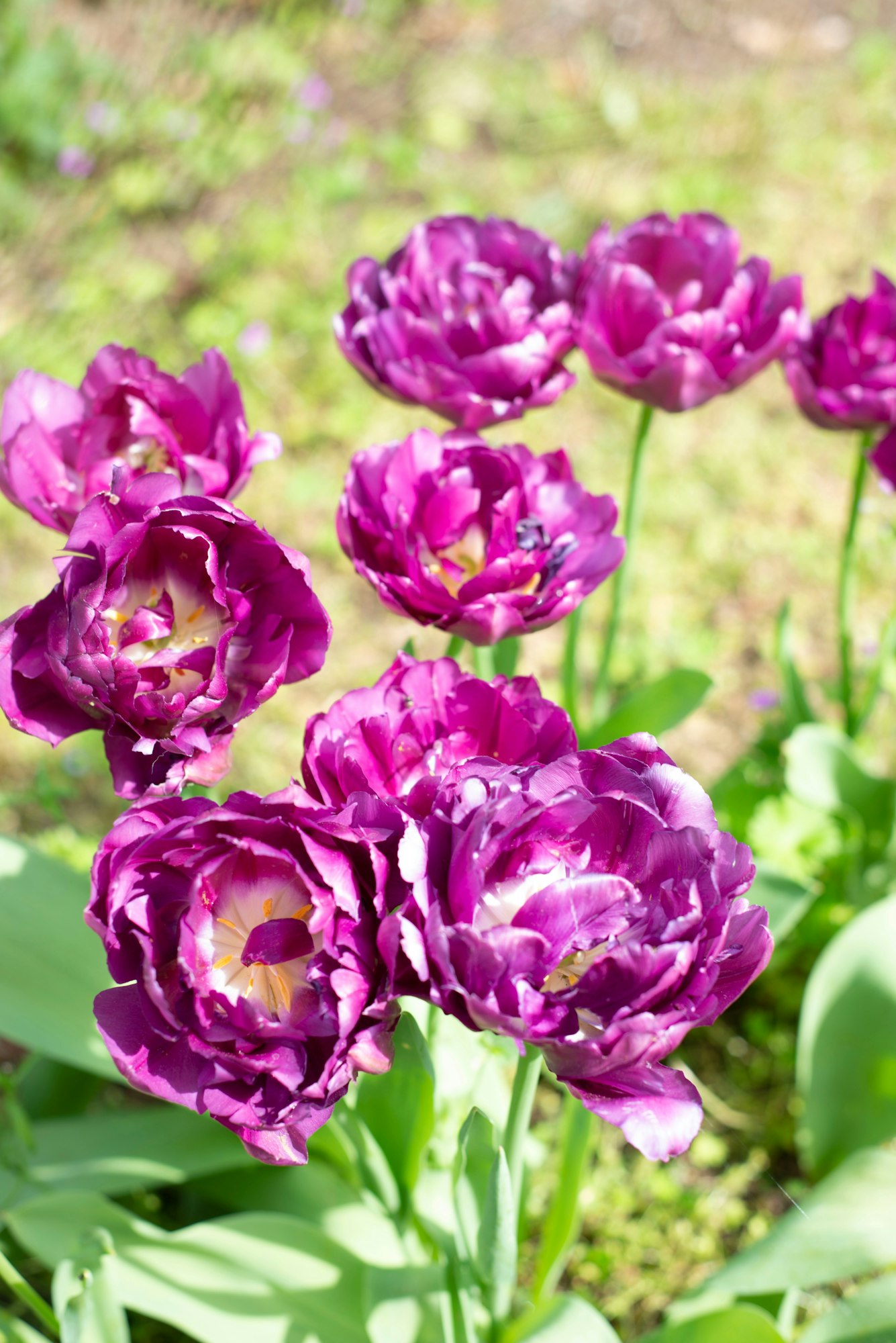
Peonies are beloved for their lush, fragrant blooms that come in shades of pink, red, white, and yellow. These perennials are not only stunning but also long-lived, with some plants thriving for over 100 years. Their large, showy flowers make them a centerpiece in any garden during late spring to early summer.
- Care Tips: Plant peonies in well-drained soil in a sunny spot that receives at least 6 hours of sunlight daily. They require deep, infrequent watering to establish deep roots. Avoid moving peonies once planted, as they prefer to stay put and may take a few years to bloom if disturbed.
- Planting Zones: Peonies thrive in USDA zones 3-8, where they can experience the cold winter period they require to bloom spectacularly.
5. Iris
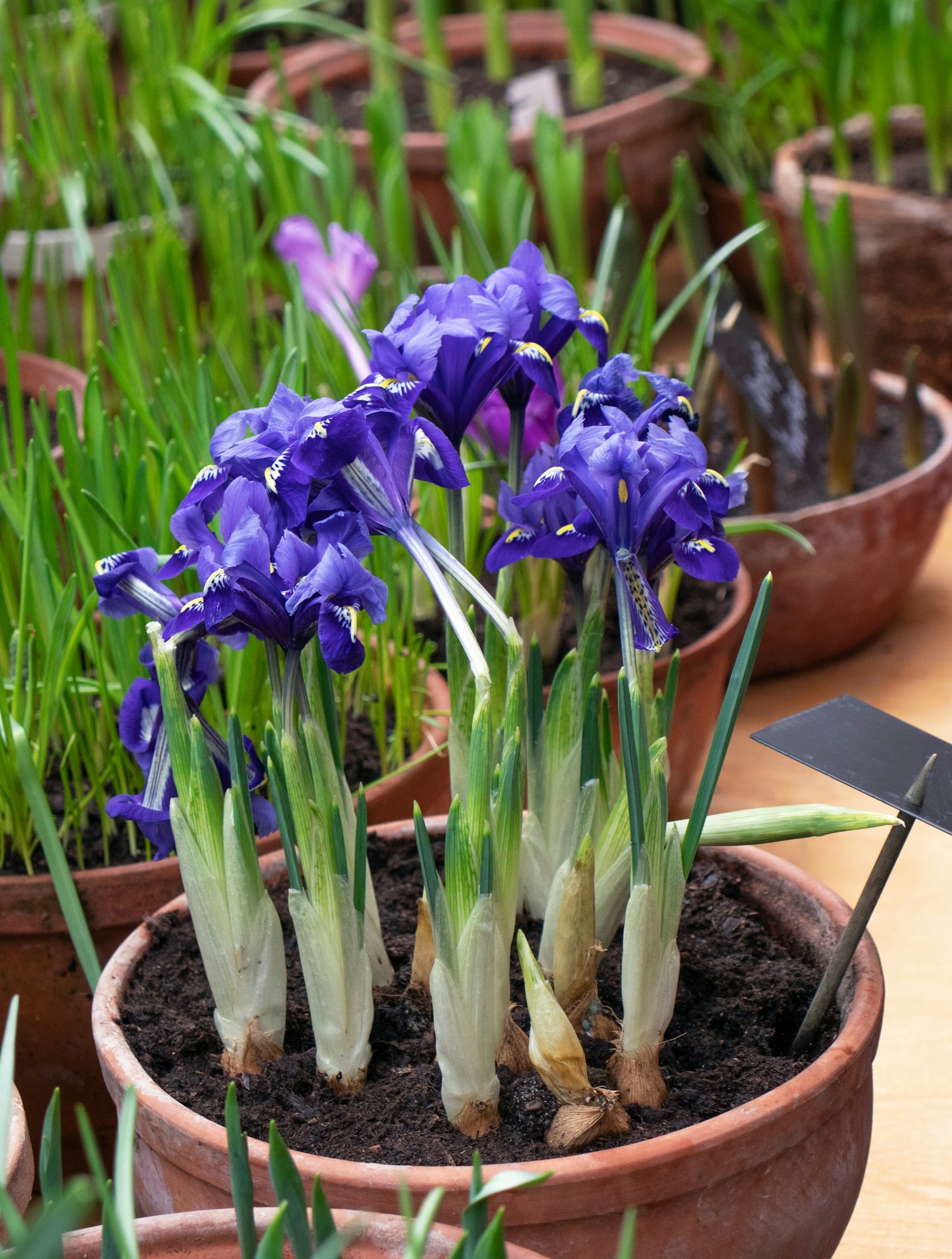
Irises captivate with their striking flowers and sword-like foliage, available in almost every color of the rainbow. They bloom from spring to early summer, depending on the variety, and are known for their unique flower structure.
- Care Tips: Plant iris rhizomes in a sunny spot with well-drained soil in late summer to early fall. The rhizomes should be planted so that the tops are slightly exposed to the air. They require minimal watering once established but may need extra care in extremely hot or dry conditions.
- Planting Zones: Suitable for zones 3-9, irises are versatile and can adapt to a range of climates, making them a favorite among gardeners.
6. Lupine
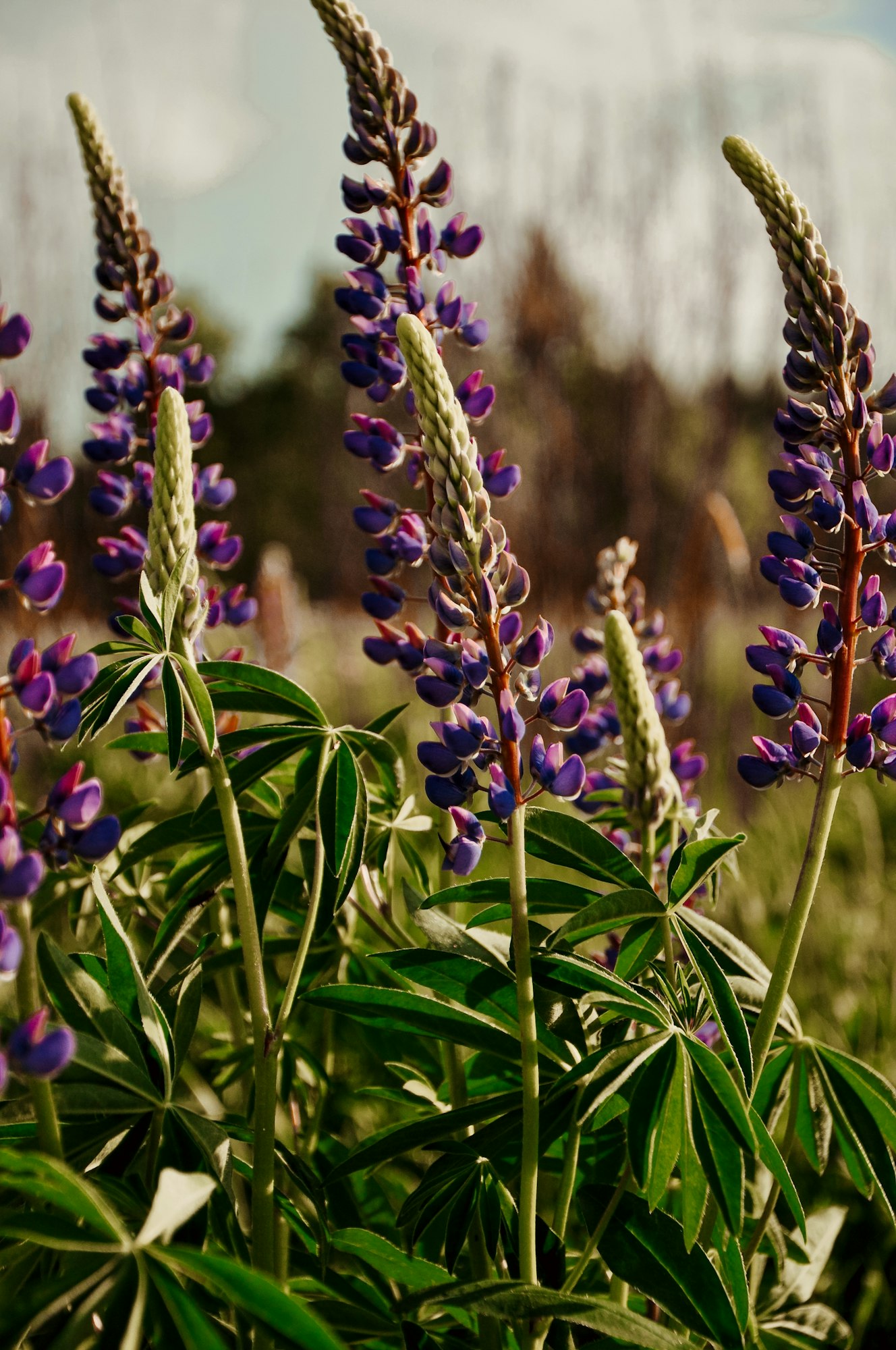
Lupines are known for their tall, spike-like clusters of flowers, which can range in color from blue and purple to pink and white. They add height and texture to garden beds and are particularly attractive to pollinators.
- Care Tips: Lupines prefer full sun to partial shade and well-drained, slightly acidic soil. They benefit from regular watering, especially during dry spells, but do not like to sit in wet soil. Adding a layer of mulch can help retain soil moisture and reduce weed competition.
- Planting Zones: Thriving in USDA zones 4-8, lupines are a fantastic choice for adding vertical interest to your spring and early summer garden.
Summer Bloomers
These summer bloomers are essential for any gardener looking to maintain a lively and colorful garden throughout the hottest months. They offer a blend of beauty, resilience, and attraction for wildlife, creating a dynamic and vibrant outdoor space.
7. Coneflower (Echinacea)
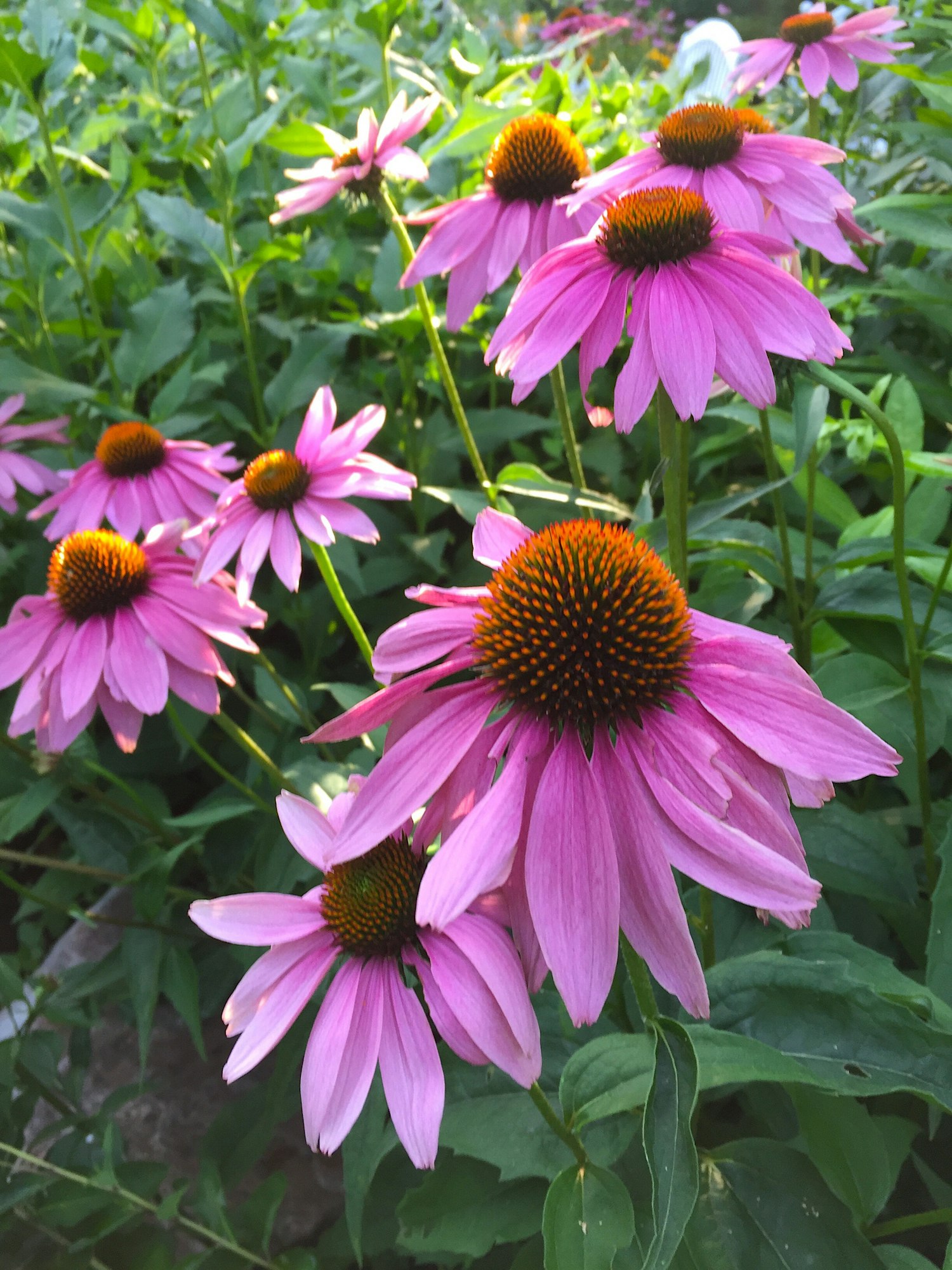
Coneflowers, with their daisy-like appearance, are a staple in any summer garden. Their prominent, cone-shaped centers are surrounded by petals in shades of purple, pink, white, and yellow. Echinacea is not only beautiful but also known for its medicinal properties.
- Care Tips: Plant in full sun or partial shade in well-drained soil. Coneflowers are drought-tolerant once established, making them ideal for low-maintenance gardens. Deadheading spent flowers can encourage a second bloom.
- Planting Zones: Hardy in USDA zones 3-9, coneflowers are adaptable and can thrive in a wide range of climates.
8. Black-eyed Susan (Rudbeckia)
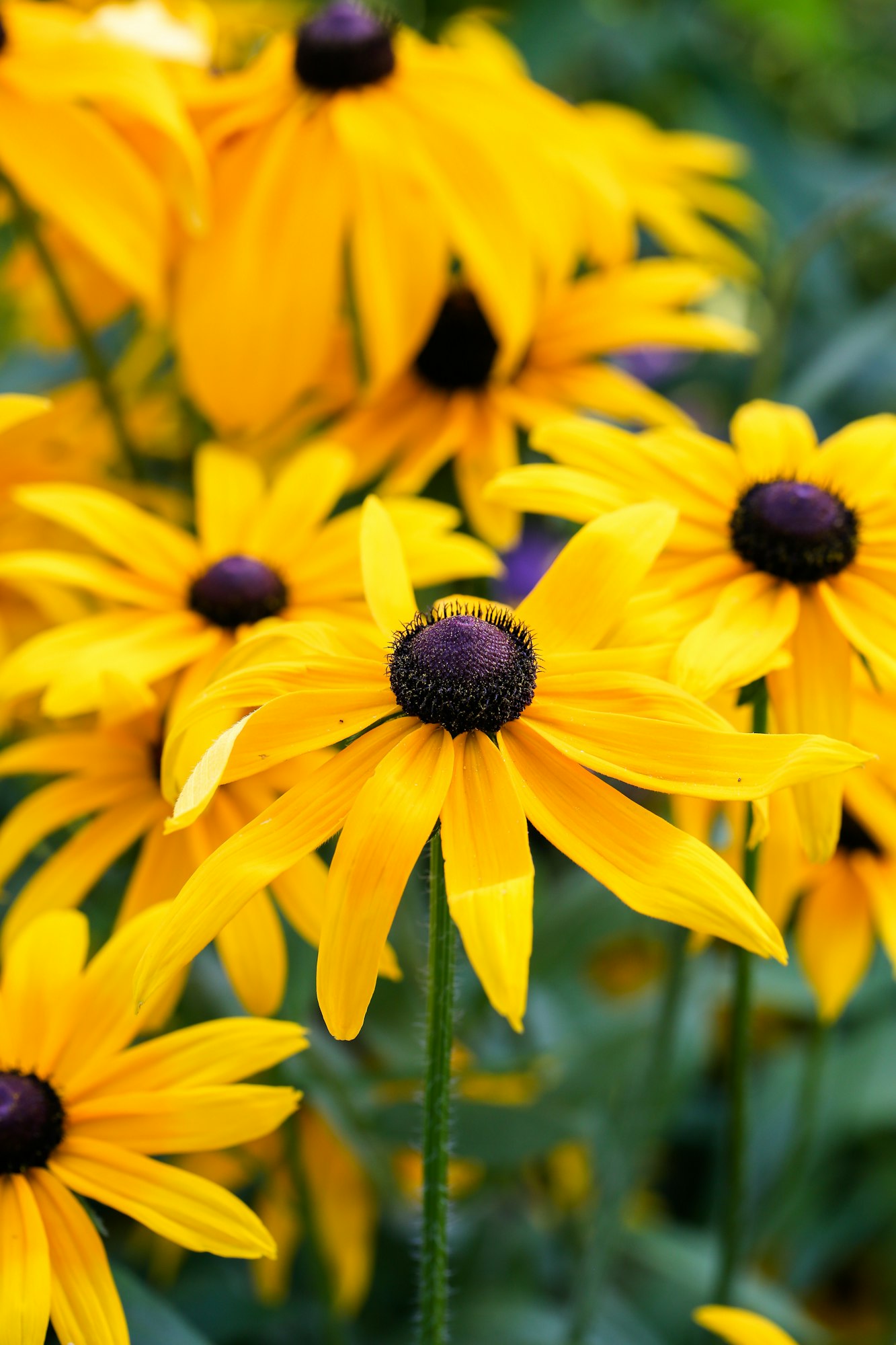
Black-eyed Susans are instantly recognizable by their bright yellow petals and dark brown centers. These hardy perennials bloom profusely from mid-summer to fall, adding a splash of color when many other plants start to fade.
Get Gardening For Beginners
Our new EBOOK shows newcomers and green thumbs alike a step by step guide to growing the garden of their dreams.
- Care Tips: Plant in full sun and well-drained soil. They are remarkably adaptable and can tolerate poor soil, drought, and heat. Regular watering and deadheading can prolong the blooming period.
- Planting Zones: Suitable for zones 3-11, Black-eyed Susans are versatile and can be grown in nearly any garden setting.
9. Lavender
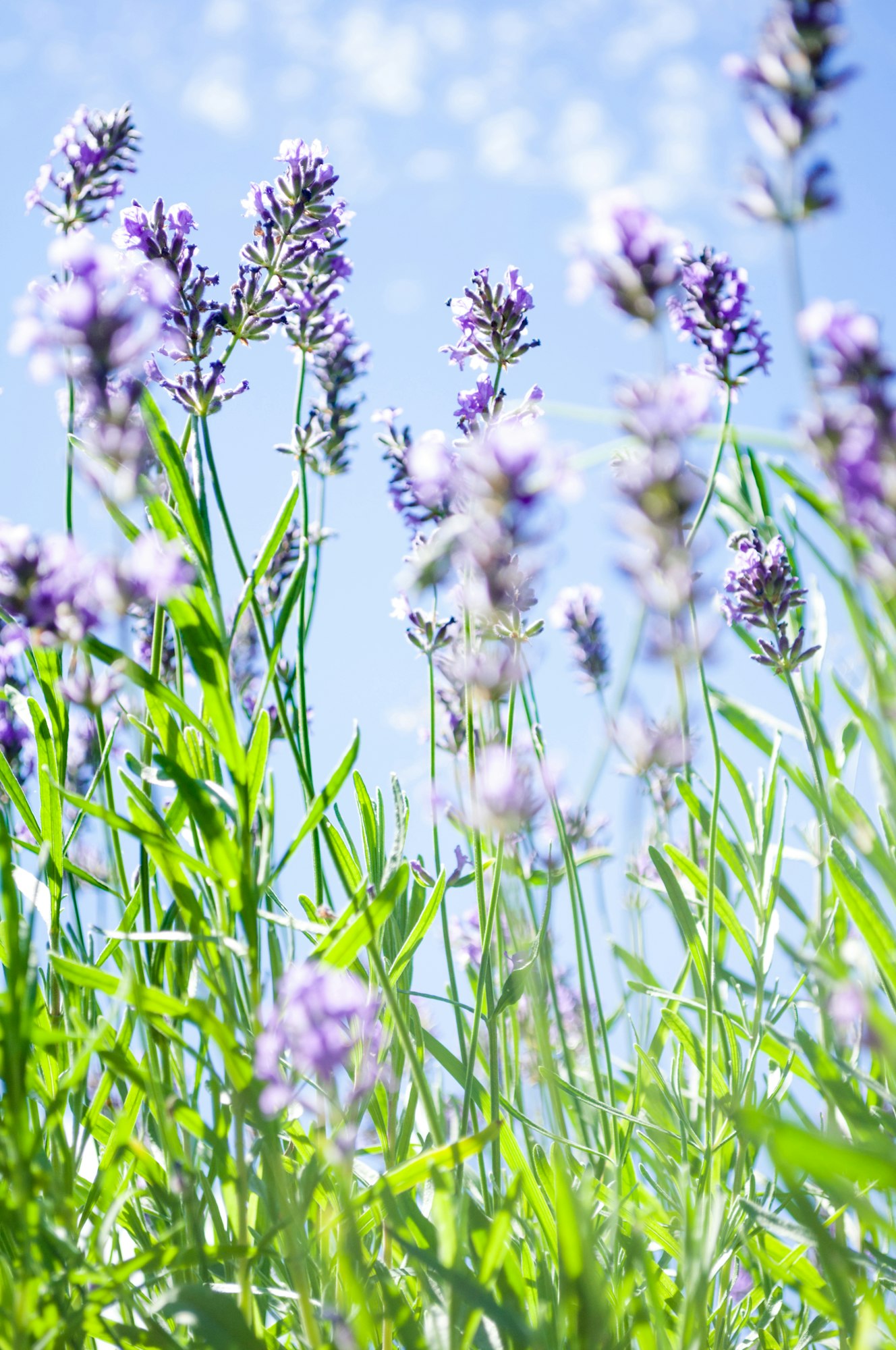
Lavender is cherished for its fragrant flowers and silvery foliage. It blooms in summer, producing spikes of purple flowers that are beloved by bees and butterflies. Beyond its beauty, lavender is used in culinary and herbal contexts.
- Care Tips: Lavender thrives in full sun and well-drained, sandy soil. It prefers dry conditions and should not be overwatered. Pruning after flowering can encourage bushy growth and prevent the plant from becoming woody.
- Planting Zones: Hardy in zones 5-9, lavender requires a bit more warmth than the previous two but still offers wide adaptability to different garden environments.
Late Summer to Fall Bloomers
As the summer heat begins to wane, late summer to fall bloomers come into their own, providing a last hurrah of color and interest in the garden. These perennials are known for their durability and the extended display they offer, ensuring the garden remains vibrant as the season transitions.
10. Russian Sage
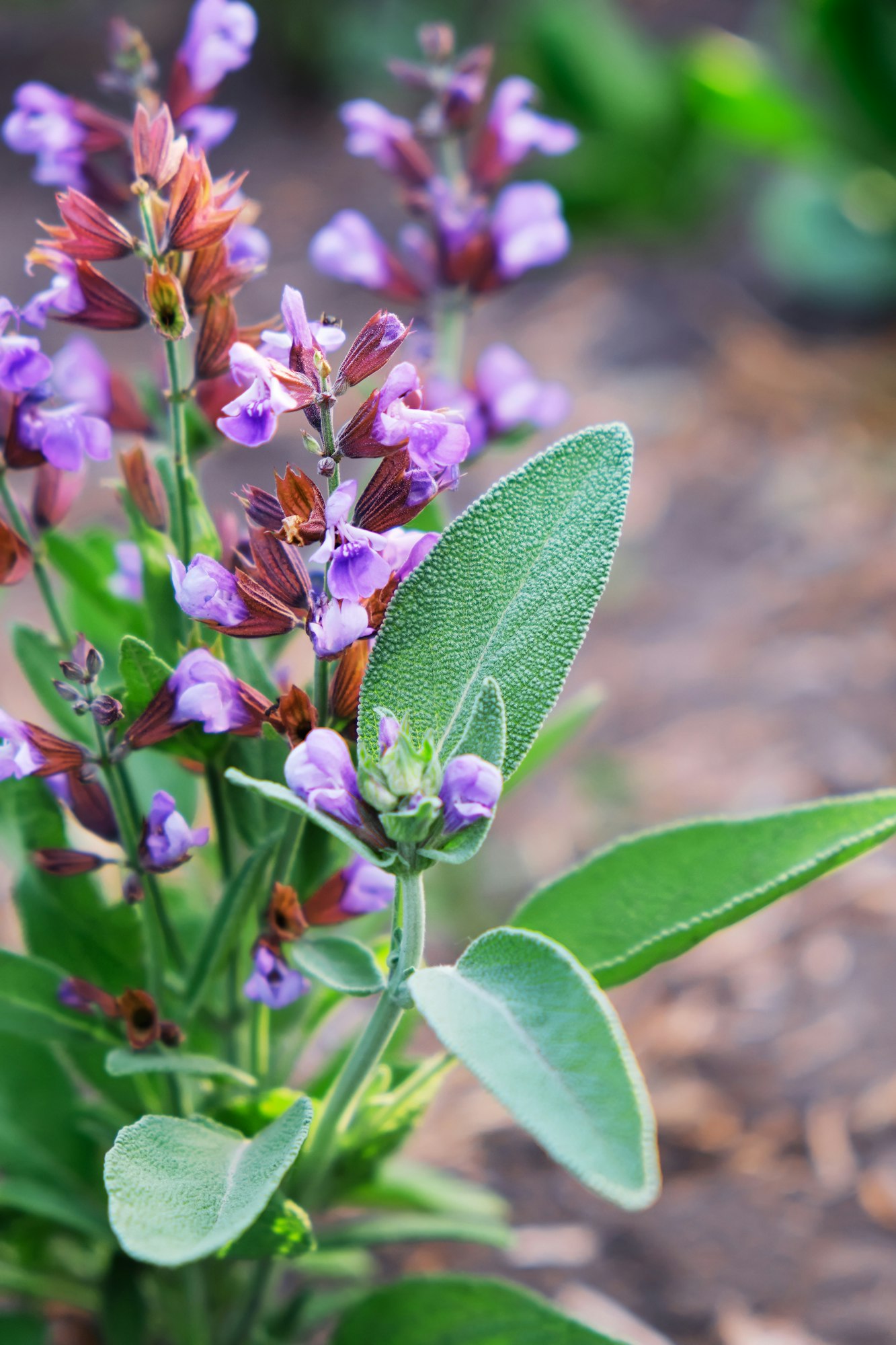
Russian Sage (Perovskia atriplicifolia) is a tall, airy plant known for its silvery foliage and lavender-blue flowers. It blooms from late summer into fall, offering a light, ethereal quality to the garden landscape. This plant is not only beautiful but also highly aromatic, attracting bees and butterflies.
- Care Tips: Plant Russian Sage in full sun and well-drained soil. It is extremely drought-tolerant, making it ideal for xeriscaping or areas with low water availability. Pruning in early spring can help maintain its shape and promote vigorous growth.
- Planting Zones: Hardy in USDA zones 4-9, Russian Sage can thrive in a variety of climates, making it a versatile choice for late-season color.
11. Sedum (Stonecrop)
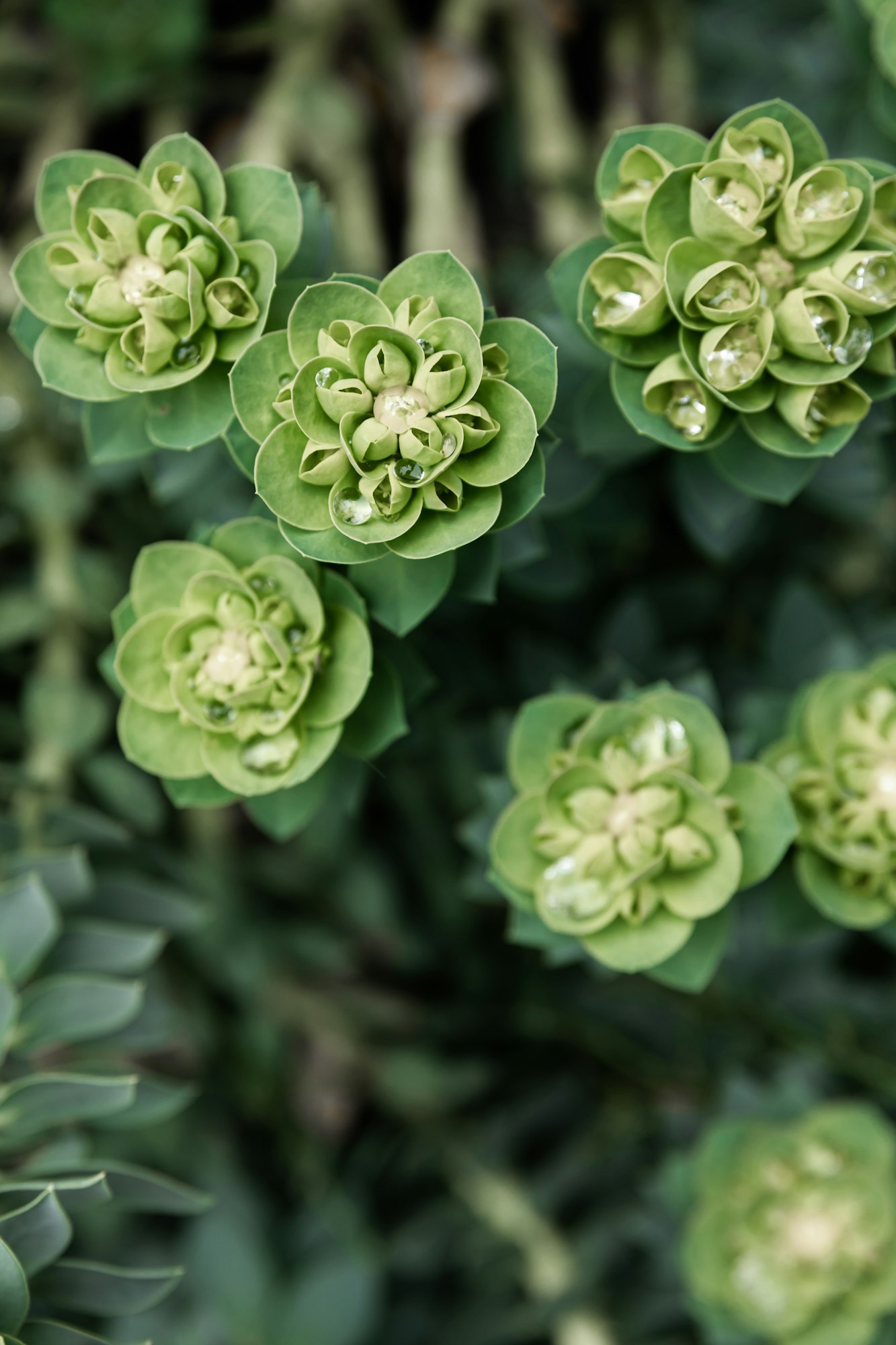
Sedum, also known as Stonecrop, features succulent leaves and clusters of star-shaped flowers. It comes in various colors, including pink, red, yellow, and white. Sedums are particularly noted for their ability to thrive in tough conditions and their late summer to fall blooming period.
- Care Tips: Plant in full sun to partial shade in well-drained soil. Sedums are deficient maintenance, requiring minimal watering as they are drought-resistant. They are ideal for rock gardens, borders, or ground cover.
- Planting Zones: Suitable for zones 3-9, Sedum is adaptable to a wide range of environments and is an excellent choice for adding resilience and interest to the garden.
12. Chrysanthemum
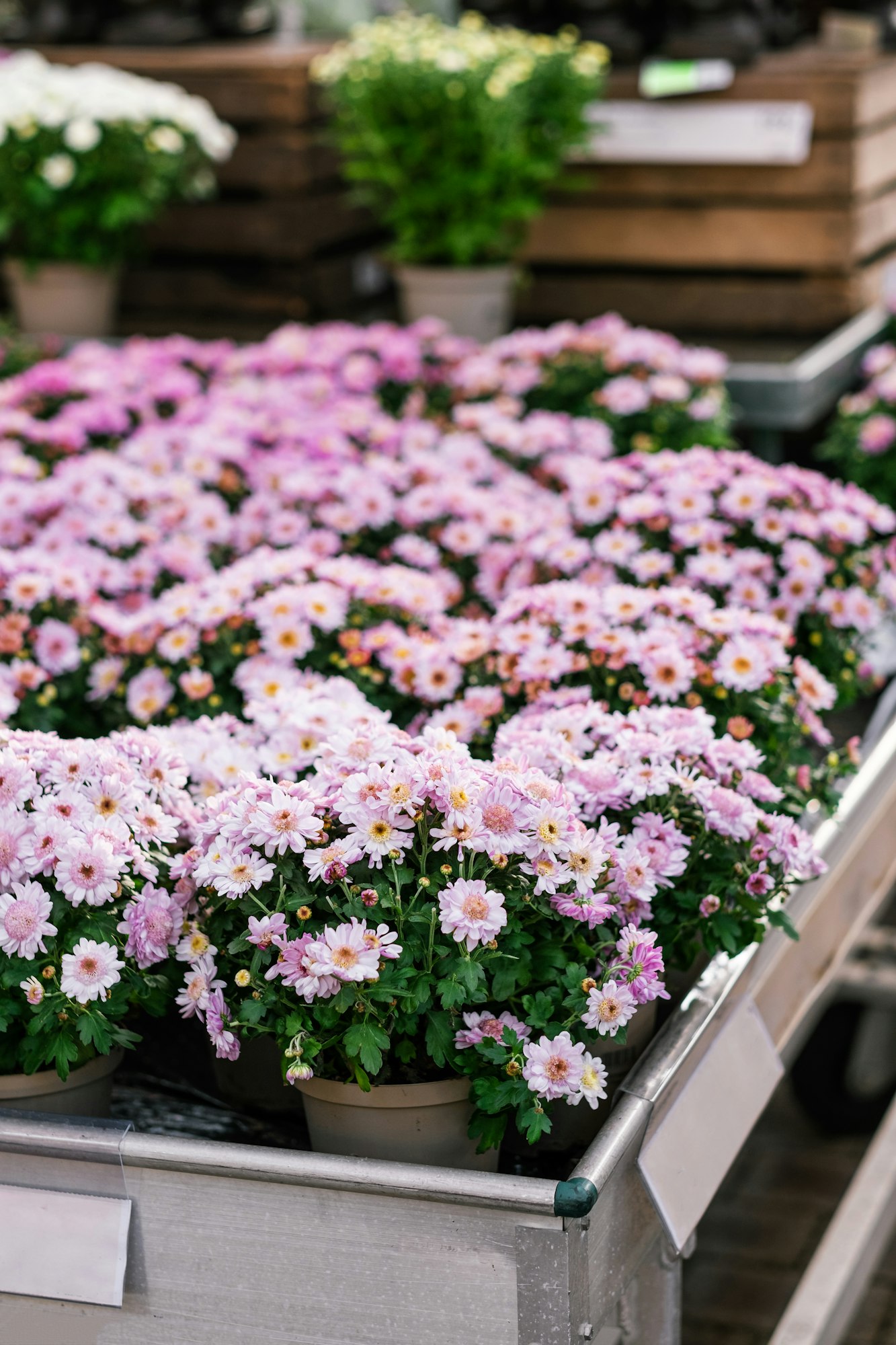
Chrysanthemums, or mums, are the quintessential fall flower, offering a burst of color in shades of yellow, pink, orange, red, and white. Their dense, bushy flowers make them popular for both garden beds and containers, providing vibrant displays well into the fall.
- Care Tips: Plant mums in full sun and well-drained soil. They benefit from regular watering and mulching to keep the roots cool and moist. Pinching back the stems in early summer can result in a bushier plant with more flowers.
- Planting Zones: Hardy in zones 5-9, Chrysanthemums may require winter protection in colder areas but are otherwise easy to care for and can bring a lively burst of color to the autumn garden.
These late summer to fall bloomers are crucial for extending the gardening season, offering textures, colors, and forms that stand out as the garden begins to prepare for winter. With proper care, they can provide lasting beauty and interest, making the transition into the cooler months a vibrant and colorful experience.
Winter Interest
Even as the colder months approach, the garden need not be devoid of color and life. Some perennials bloom in winter, offering bright spots in the otherwise dormant landscape. These plants not only provide visual interest but can also become a vital food source for local wildlife during the scarce winter months.
13. Hellebores (Christmas Rose)
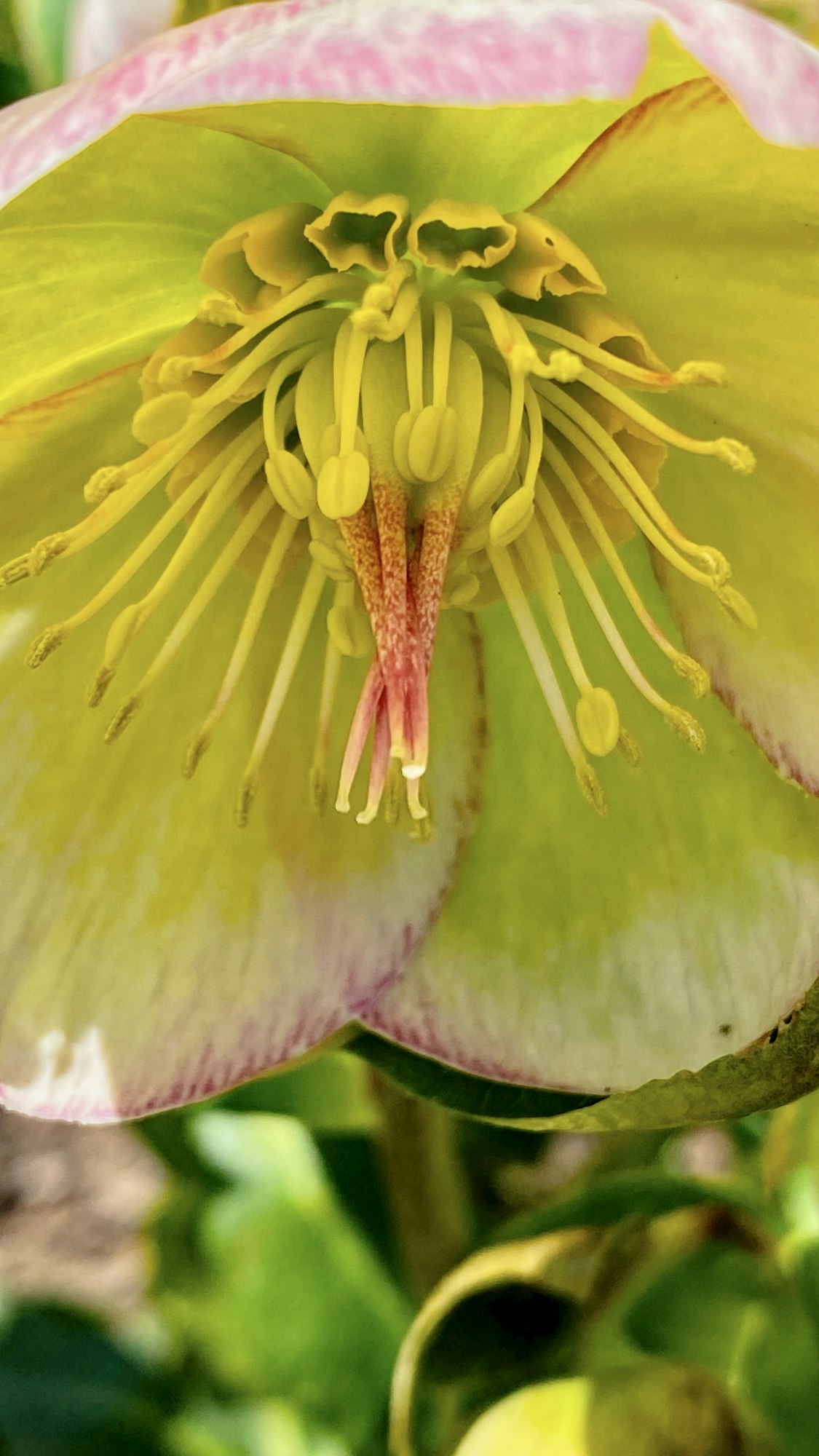
Hellebores, also known as Christmas roses, bloom in the depths of winter, bringing color to the garden with their nodding flowers in shades of white, green, pink, and purple. These tough plants can flower even through snow, offering a glimpse of spring on the coldest days.
- Care Tips: Plant Hellebores in partial to full shade in moist, well-drained soil enriched with organic matter. They are low maintenance but benefit from a top dressing of compost in the fall. Removing old leaves in late winter can help showcase the flowers and prevent disease.
- Planting Zones: Hardy in USDA zones 4-9, Hellebores are suited to a wide range of climates and can provide winter beauty in many gardens.
14. Winter Aconite
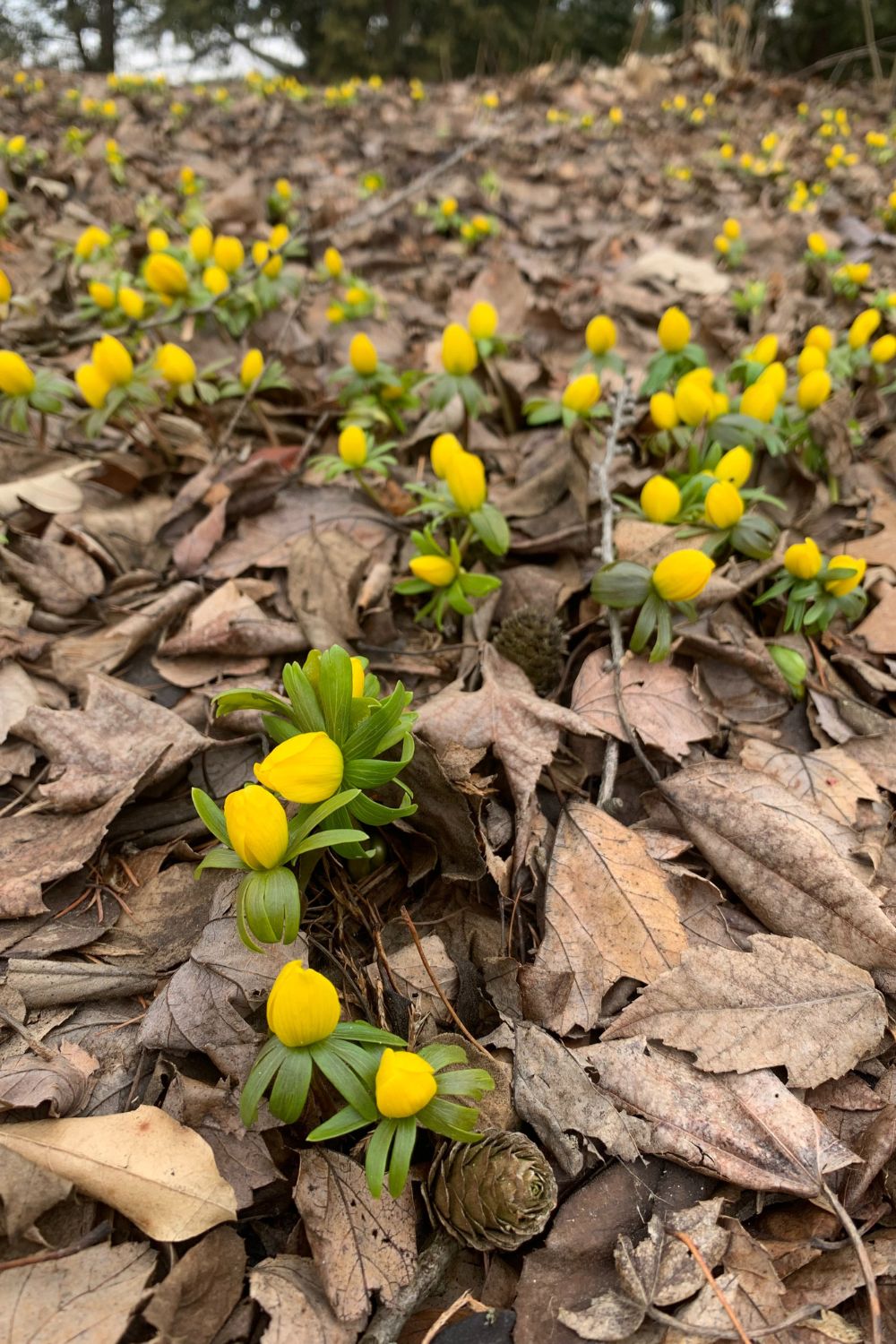
Winter Aconite (Eranthis hyemalis) is one of the earliest flowers to bloom, often appearing alongside snowdrops. These small, cheerful plants produce bright yellow flowers that can warm up a wintry garden.
- Care Tips: Plant Winter Aconite bulbs in the fall in well-drained soil with plenty of organic material. They prefer a spot that gets winter and early spring sun but is shaded in the summer. Once established, they require very little care and will naturalize, spreading to form a carpet of yellow blooms.
- Planting Zones: Suitable for zones 4-7, Winter Aconite thrives in cooler climates and is a perfect choice for adding early color to the winter garden.
15. Witch Hazel
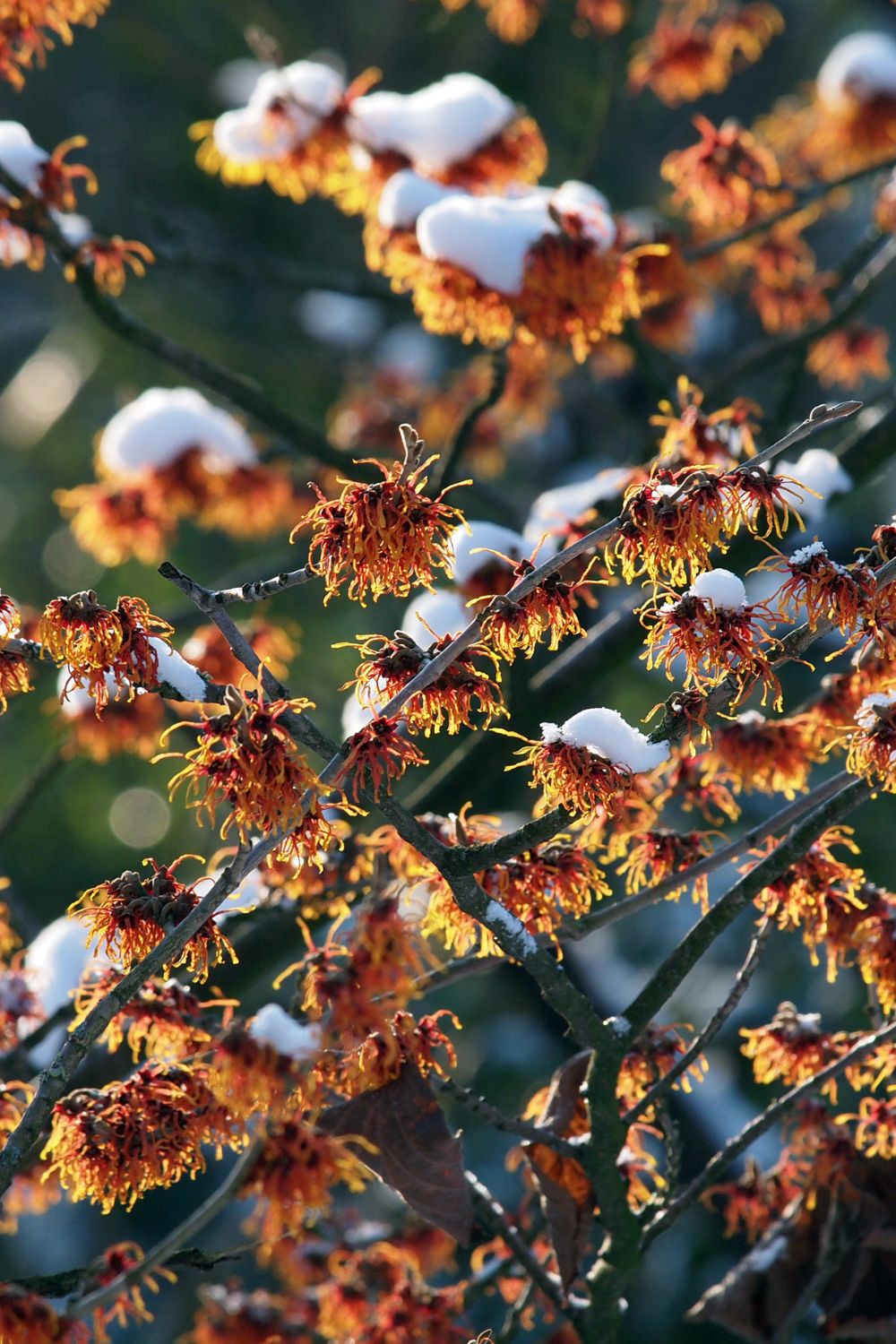
Witch Hazel (Hamamelis) is known for its unique, fragrant flowers that appear in late winter to early spring. The spidery blooms come in colors ranging from yellow to orange and red, providing not only visual interest but also a pleasant fragrance on chilly days.
- Care Tips: Plant Witch Hazel in full sun to partial shade in well-drained, acidic neutral soil. It requires regular watering, especially in the first few years to establish a deep root system. Pruning is rarely needed but can be done in spring to shape the plant or remove any dead wood.
- Planting Zones: Hardy in USDA zones 5-8, Witch Hazel can add both color and scent to the winter garden, making it a valuable addition for year-round interest.
These winter-interest plants are essential for gardeners looking to create a landscape that remains dynamic and engaging throughout the year. By incorporating Hellebores, Winter Aconite, and Witch Hazel into your garden, you can enjoy blooms and fragrances even in the coldest months, providing a beautiful contrast to the snowy or bare winter backdrop.
All-Season Perennials
For those seeking to ensure their garden remains appealing throughout the year, incorporating all-season perennials is a strategic move. These plants offer visual interest across multiple seasons, whether through their foliage, flowers, or both.
16. Hosta
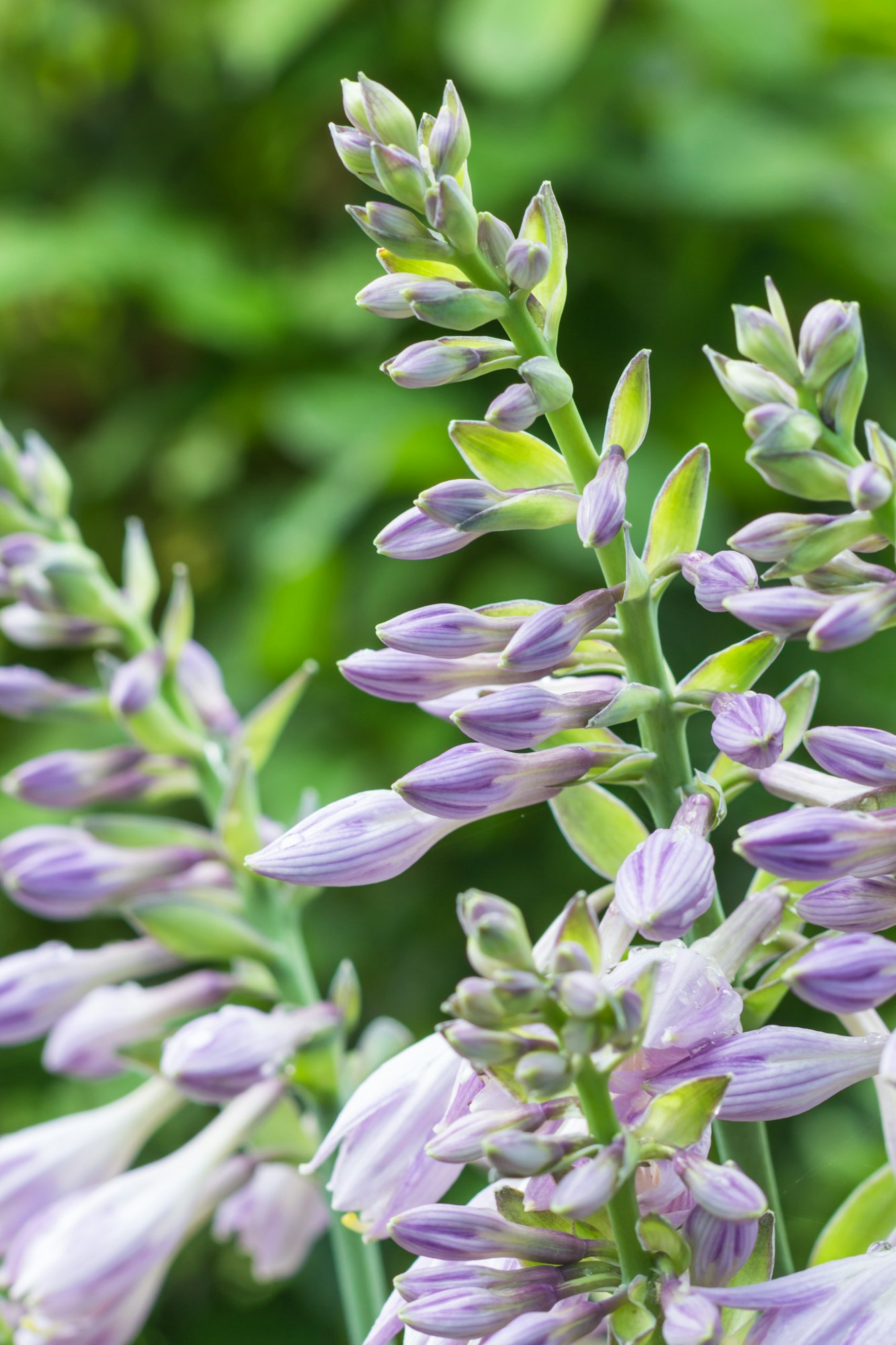
Hostas are beloved for their lush foliage, which comes in shades of green, blue, and variegated patterns. While they do flower in summer, producing tall spikes of lavender or white blooms, it’s their leaves that truly steal the show, providing texture and color from spring through fall.
- Care Tips: Plant Hostas in partial to full shade in moist, well-drained soil. They thrive in shady areas where many other plants struggle, making them a valuable addition to any garden. Regular watering, especially in dry periods, and a spring mulch of compost can help keep them looking their best.
- Planting Zones: Hardy in USDA zones 3-9, Hostas are a versatile choice for gardeners across a wide range of climates.
17. Daylily (Hemerocallis)
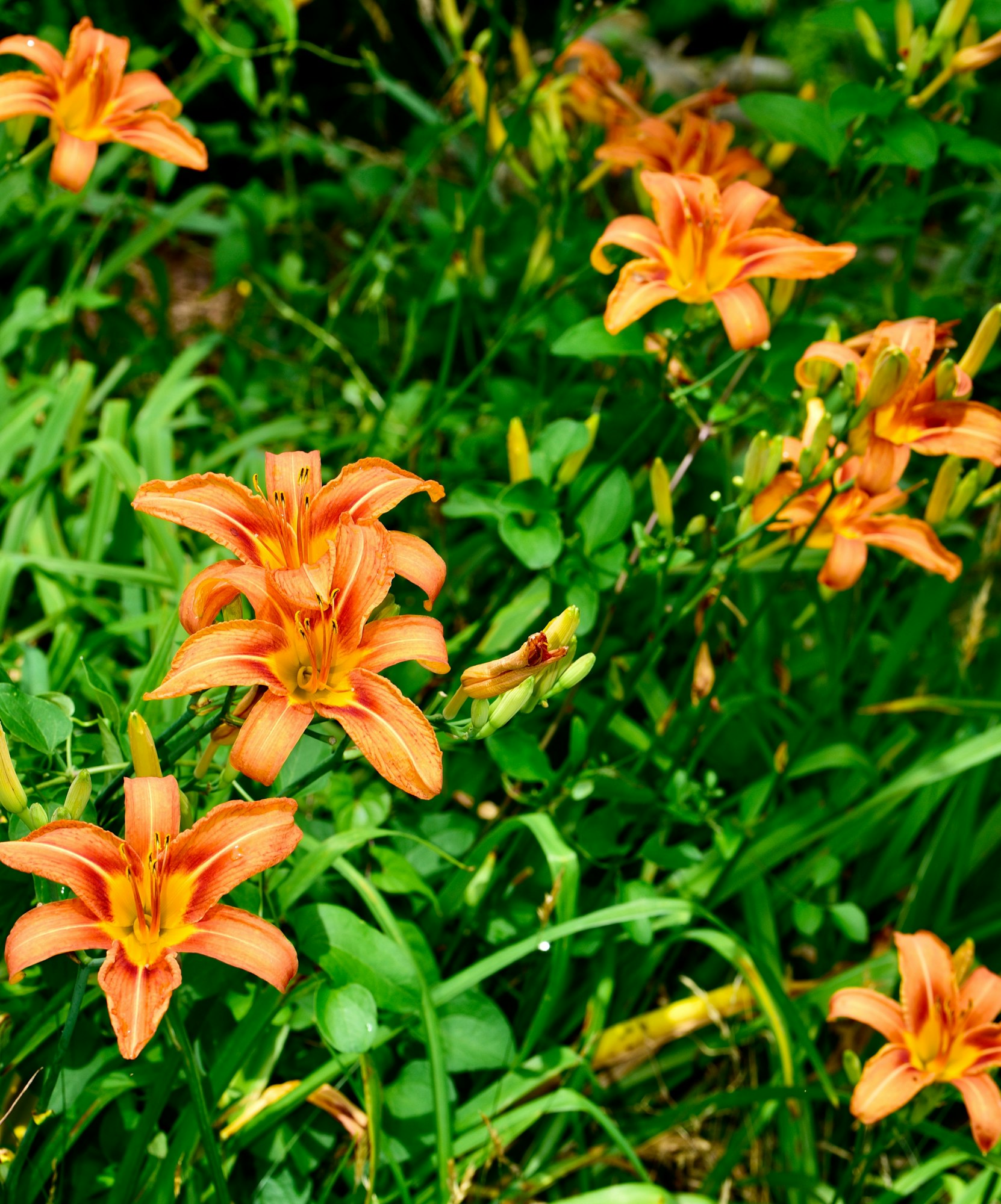
Daylilies are known for their striking flowers, which bloom profusely even under tough conditions. Each flower lasts just one day, but the plants produce so many that they keep the garden colorful from early summer to fall. Available in a myriad of colors and sizes, they’re a low-maintenance option for busy gardeners.
- Care Tips: Plant in full sun to partial shade in well-drained soil. Daylilies are drought-tolerant once established and can thrive with minimal care. Removing spent flowers can encourage more blooms, and cutting back the foliage after it dies back in the fall can keep the garden tidy.
- Planting Zones: Suitable for zones 3-9, Daylilies are adaptable and resilient, making them a staple in gardens across much of the country.
18. Coral Bells (Heuchera)
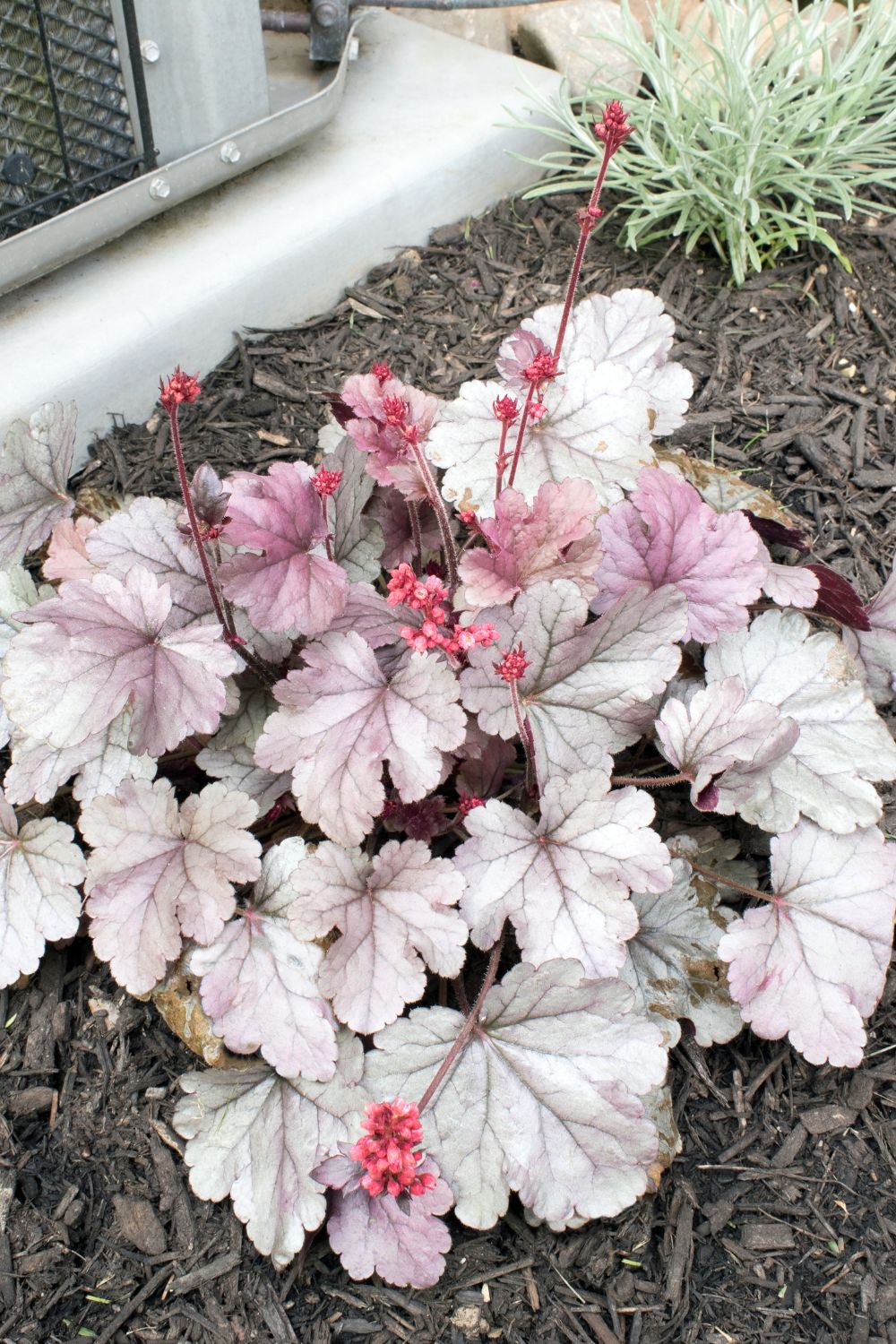
Coral Bells boast vibrant foliage in shades of purple, bronze, green, and silver, often with intricate veining or ruffled edges. Small bell-shaped flowers on tall stems add a delicate touch in the spring and summer, but it’s the leaves that provide lasting interest.
- Care Tips: Plant in partial shade to full sun (though some varieties prefer more shade) in well-drained soil. They benefit from occasional watering during dry spells and an annual top-dressing of compost to provide nutrients. Removing faded flowers can promote a tidier appearance.
- Planting Zones: Hardy in zones 4-9, Coral Bells are a fantastic option for adding continuous color through their foliage, complementing both flowers and other greenery in the garden.
Incorporating these all-season perennials into your garden ensures a lively display throughout the year, from the verdant growth of spring to the subtle beauty of winter. With their varied textures, colors, and flowering habits, Hosta, Daylily, and Coral Bells offer something special for every season, making your garden a year-round retreat.

